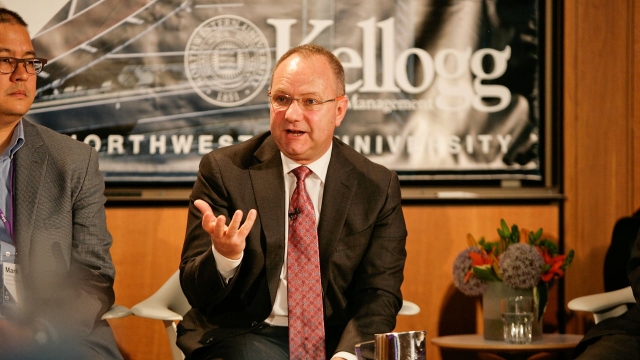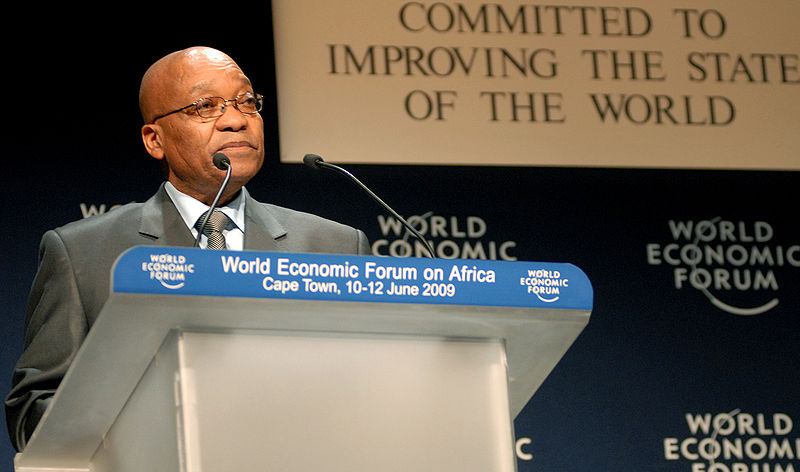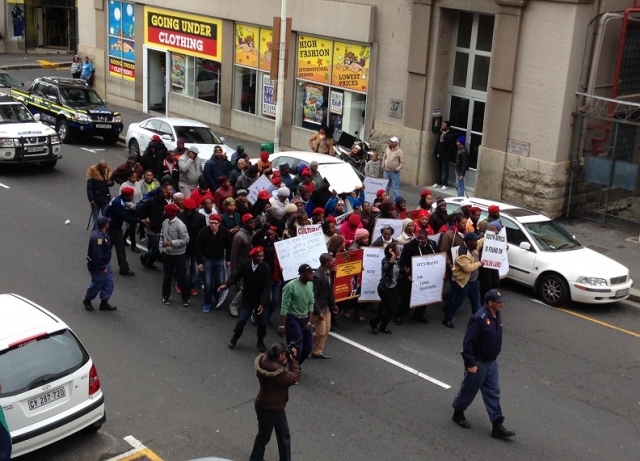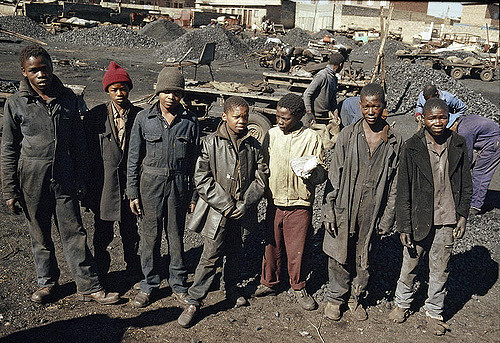The announcement on Wednesday of more than 3000 job cuts at Sibanye Gold represents a clear attack against the South African working-class. Sibanye announced 2,025 ‘retrenchments’ and 1,350 ‘voluntary redundancies’, i.e, 3,375 job cuts at its Cooke mines in Gauteng and Beatrix West operations in the Free State.
This is part of the “jobs bloodbath” and ongoing deep cuts carried out by the capitalists to make the workers pay for the crisis. In July the government said that over 32,000 jobs could be cut in the mining sector alone over the next year as exports to China slow down. This represents a sharp acceleration of unemployment in the sector if we consider that the industry cut 47,000 jobs in between 2012 to 2015 according to the Chamber of Mines. The capitalist economy is in a deep crisis and the bosses are putting it all on the shoulders of the working-class and the poor.
"Some parts of the industry are in the intensive care unit," said Roger Baxter, the CEO of the Chamber as he continues to rake in the millions while workers are turned out onto the streets. AngloGold Ashanti said in June it could cut up to 8,500 jobs. Mark Cutifani, the CEO of Anglo warned in July of “even bolder action” and that “things may still get worse before they get better.” Similarly, Anglo Platinum, the world's top platinum producer, and Kumba Iron Ore have announced they will cut thousands of jobs in the near future. Lonmin also plans to retrench 1,139 workers before Christmas.
 Mark Cutifani / Image: Wikimedia Commons
Mark Cutifani / Image: Wikimedia Commons
"You can bet on your own mother that 30,000 to 50,000 jobs will be lost in the South African mining industry this year and the only reason it's not worse is because of the Rand's performance," Cadiz mining analyst Peter Major said. This represents a declaration of war against mineworkers.
But this onslaught is not only planned for the mining industry. In July, retail giant Pick n Pay announced a second round of retrenchments that will cut at least 10 percent of its 35,000 workforce. The agriculture sector has already shed nearly 84,000 jobs last year, mostly in the Western Cape, Northern Cape, Gauteng and Kwazulu-Natal provinces. The steel industry was also hit hard and ArcelorMittal are planning big cuts to its operations. The motor vehicle manufacturing sector has also began shedding jobs with General Motor’s exit from the country.
According to the latest labour force statistics from Statistics South Africa, the unemployment figure of 27.7 percent, or 6.17 million, is slightly up from the same quarter in 2016. This figure is shocking in itself but it does not tell the whole story. According to the expanded unemployment rate which includes discouraged work seekers between the ages of 15 to 64, unemployment is close to 9.3 million, or nearly 37 percent.
A deeper look into these numbers shows an even more shocking reality for working-class people. Huge sections of the population suffer from long-term chronic unemployment with little prospects for the future. In fact, as much as 39 percent of all South Africans of working age has never had a job before. The youth in particular are severely affected where the figure is 60.3 percent. On the other end of the spectrum, older people face the problem of long-term unemployment after they lost their jobs. A greater share of them last worked more than five years ago. This share was the highest at 47.4 percent for the 50-65 year-olds.
The unemployment rate has been rising steadily for the past 10 years despite government policies that promised to cut unemployment. For example, the government’s New Growth Path policy which was adopted in 2011 and promised to create 5 million jobs and reduce unemployment to 15 percent by the end of 2020. Instead, unemployment has increased by 2.2 million since then.This pipedream was subsequently abandoned quietly.
The attacks do not limit themselves to outright retrenchments of course. There has been a huge increase in privatization, casualisation, outsourcing and labour broking by the capitalists. In the past decade thousands of jobs have been turned into low-paid, insecure and temporary forms of employment through labour-brokerage or outsourcing especially in the retail, construction and food manufacturing industries. Many workers employed by labour brokers do not enjoy benefits like medical aid, pension funds and the unemployment benefits. This has seen an increase in working hours and deterioration in conditions as big businesses try to maximise profits.
The jobs numbers come a few day after Malusi Gigaba, the new Minister of Finance, gave a grave assessment of the economy during his Medium Budget Policy Statement. The economy, which has just crawled out of its first recession since 2009, is now expected to grow at a meager 0.7 percent for this year. This is almost half the number the Treasury estimated during the first quarter of the year.
Gigaba also announced that in the 1.6 trillion Rand budget there is now a 51 billion Rand shortfall and that the public debt is expected to rise from the current levels of 52 percent to 61 percent by 2020. The capitalists are deeply split over this issue. From the perspective of big business and the ratings agencies this means the implementation of austerity measures and deep cuts in order to close the deficit. This is in contrast to the Zuma wing which prefer more open Keynesian measures.
 Jacob Zuma / Image: Wikimedia Commons
Jacob Zuma / Image: Wikimedia Commons
But neither policy offer a solution to the crisis. By implementing cuts they will merely cut deeper into the market and exacerbate the loss of revenue. It will leave even less money to spend on services like healthcare, education and public transport in a country where the rich enjoy first world service provision, while large sections of the working-class black majority has to endure falling living standards.
On the other hand, the widening of the deficit will further widen the big black hole in the public finances. With the servicing of debt already the single biggest expenditure item, this could lead to the bankruptcy of the fiscus. In the long run this will mean even more brutal cuts. Both policies therefore means that the working-class will have to pay. The only solution to this crisis is to repudiate the debt, to expropriate the mines, banks, financial institutions and the monopoly industries and put them under workers’ control and management. In other words, to make the bosses pay for the crisis.
But if these capitalists think that the South African workers will merely fold their arms and do nothing, they are badly mistaken. The coming attacks on the working-class will add to the volatile political situation within the class struggle. Anger is already on the rise. The strike activity at Exxaro Resources’ Goedgeluk and Leeuwpan mines in the Limpopo and Mpumalanga as well as the wildcat strike in June at Sibanye in June are indications of things to come.
Massive class struggles are on the horizon. However, this time it will take place under a different political environment than previously. The sharp rise in the class struggle between 2009 to 2013 transformed the whole political landscape substantially. The big rise in strikes, protests, and demonstrations has transformed the political situation. The turning point was the Marikana massacre which saw the ANC responsible for apartheid era atrocities against poor black workers on strike. The capitalist policies carried out by the ANC and the militant response by the workers resulted in the former mass liberation movement beginning to fracture along class lines.
Huge class contradictions have since emerged between the ANC leadership which has the joined the ranks of the ruling class, and the working-class masses that supported it for decades. The crisis in the alliance, the splits in the trade union movement and the emergence of forces to the left to the ANC are products of this process. The result is a very precarious and volatile political environment. There has been a period of political realignment and repositioning of the working-class in relation to their organisations over the last period. The workers have been evaluating the situation and are drawing conclusions.

Many on the left have seen the splits in the COSATU and have concluded that the working-class has been weakened as a result. Some have drawn pessimistic conclusions about the ability of the working-class to struggle and win. This is wholly without foundation. The formation of the new trade union federation, SAFTU, was not a splinter but a big split, forming the country’s second biggest labour federation. More importantly, large sections of the working-class have split away from the class collaborationist and right-wing COSATU leaders who are supporting the big business tycoon, Ramaphosa for the next ANC president.
The current situation is very similar to those of the beginning of the revolutionary storm of the 1980. Under the impact of the attacks by the ruling class, the working-class will move to defend itself. This will fundamentally transform the whole situation and open a period of political upheaval where the mood of anger and frustration will come to the surface. The pressures of decades of frustration and rage are building up to a critical point. Once these pressures find an outlet, they will shake the regime from top to bottom.

